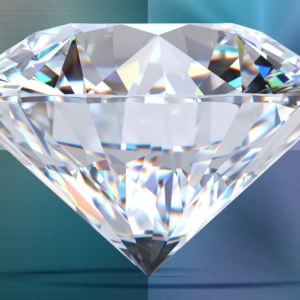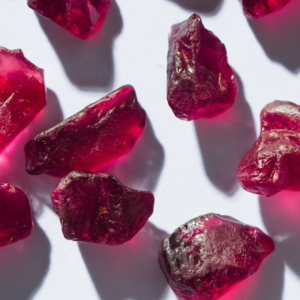Application prospects of CVD synthetic diamond in CPU
The application of CVD (Chemical Vapor Deposition) synthetic diamond in CPU (Central Processing Unit) design holds significant promise, especially as the demand for higher performance, energy efficiency, and sustainability increases in the computing industry. CVD synthetic diamonds exhibit properties that could revolutionize several aspects of CPU design and performance, particularly in areas such as heat dissipation, power efficiency, and durability.
Here are the key application prospects of CVD synthetic diamond in CPU technology:
1. Superior Heat Dissipation
- High Thermal Conductivity: Diamond is the best natural material for heat conduction, with a thermal conductivity 5 times higher than copper. This makes CVD synthetic diamond a prime candidate for advanced heat spreaders and thermal management systems in CPUs.
- Benefit for High-Performance Computing: As CPUs become faster and more powerful, heat dissipation becomes one of the biggest challenges. Synthetic diamonds can help cool high-performance processors, especially in fields like AI processing, big data analysis, and gaming.
- More Compact Designs: With better heat dissipation, processors can be made smaller and more powerful, enabling the development of compact, high-performance systems without the need for bulky cooling solutions.
2. Enhanced Power Efficiency
- Low Electrical Resistance: CVD diamonds have a very low electrical resistance, which can contribute to higher energy efficiency in CPU operations. This reduces power losses during data processing, making the system more energy-efficient.
- Reduced Power Consumption: As energy consumption is a growing concern in both consumer electronics and data centers, integrating CVD diamond components in CPU circuits could help optimize power usage by improving energy efficiency.
- Increased Performance-per-Watt: More efficient thermal management coupled with lower energy consumption could lead to a significant increase in performance-per-watt, a crucial metric for processors used in data centers, mobile devices, and supercomputers.
3. Enhanced Durability and Stability
- Radiation Resistance: CVD synthetic diamond is known for its resistance to radiation and extreme environmental conditions. This could make it highly valuable in CPUs designed for space applications, military uses, or high-radiation environments like particle accelerators and high-energy physics labs.
- High-Temperature Stability: Unlike silicon-based semiconductors, which can degrade at high temperatures, CVD diamonds remain stable at extremely high temperatures, potentially allowing CPUs to operate in harsh conditions without performance degradation.
- Longer Lifespan: The robust nature of CVD diamond can help extend the lifespan of CPUs by reducing wear and tear, making it a good choice for mission-critical applications where reliability and longevity are essential.
4. Potential for Quantum Computing
- Quantum Computing Applications: One of the most exciting prospects for CVD synthetic diamonds in CPUs is their potential in quantum computing. Diamond, particularly through the use of nitrogen-vacancy (NV) centers, is an ideal candidate for quantum bits (qubits) due to its ability to maintain coherence in quantum states over longer periods.
- Quantum Processors: As quantum computing becomes more mainstream, CVD diamonds may play a role in quantum processors by providing a stable, coherent medium for qubits, helping to advance the development of practical, scalable quantum computers.
- Hybrid Systems: CVD diamond could potentially be used in hybrid quantum-classical systems, where classical CPUs work alongside quantum processors to enhance computational power for specialized tasks, such as complex simulations or cryptography.
5. Microelectronics and High-Frequency Devices
- High-Frequency Performance: CVD synthetic diamond can support high-frequency operations due to its low loss and high stability at various frequencies. This makes it suitable for high-frequency transistors and other radio-frequency (RF) components in CPUs used in telecommunications, radar, and satellite communications.
- Miniaturization of Components: With its excellent thermal conductivity and mechanical strength, CVD diamond can be used in smaller, more integrated chips, potentially improving the speed and size of microprocessors without compromising on performance.
- Power Amplifiers: CVD diamond could also be integrated into power amplifiers for high-speed communication, where heat dissipation is critical to maintaining signal integrity and performance.
6. Enhanced Semiconductor Properties
- High-Quality Semiconductor Material: While silicon is currently the dominant semiconductor material, CVD synthetic diamond offers a new alternative that could eventually outperform silicon in certain areas. Diamond-based semiconductors have higher breakdown voltage, electron mobility, and thermal conductivity, which could lead to faster and more energy-efficient processors.
- Wide Bandgap Semiconductors: Diamond is a wide bandgap semiconductor, meaning it can operate at higher voltages and temperatures than silicon. This property could open the door to new applications for CPUs that require extreme conditions, such as in automotive electronics, electric vehicles (EVs), and industrial machinery.
7. Potential for Integration with Traditional Semiconductor Materials
- Hybrid Architecture: While CVD diamonds are not yet widely used in mainstream consumer CPUs, their hybrid integration with traditional silicon chips is a viable future direction. For example, CVD diamonds could be used as heat spreaders or substrates in traditional silicon-based processors, helping to improve performance while maintaining compatibility with existing infrastructure.
- Diamond-Based Components: In the future, certain components of CPUs, such as heat sinks, transistors, and even logic gates, could be made from CVD diamond materials to take advantage of their unique properties without completely replacing silicon.
Challenges and Considerations
While the application prospects for CVD synthetic diamond in CPUs are exciting, there are several challenges that need to be addressed:
- Cost of Production: The current cost of CVD diamond synthesis remains high, which may limit its adoption in mainstream consumer CPUs unless the technology becomes more affordable.
- Manufacturing Scalability: While CVD diamonds are produced with high precision, scaling production to the volume needed for widespread CPU use could present logistical challenges.
- Integration with Existing Technologies: The integration of CVD diamonds into current CPU architectures requires significant research and development, as the materials need to work seamlessly with existing semiconductor technologies.
Conclusion
CVD synthetic diamonds offer a range of revolutionary properties that could dramatically improve the performance, efficiency, and durability of future CPU processors. From advanced heat dissipation and energy efficiency to their potential in quantum computing, high-frequency applications, and semiconductor advancements, CVD diamonds could play a pivotal role in the evolution of computing technology. However, their widespread adoption will depend on overcoming challenges related to cost, production scalability, and material integration with existing technologies. As research and manufacturing techniques continue to improve, the potential of CVD synthetic diamonds in the CPU market is likely to grow in the coming years.


Leave a Reply
Want to join the discussion?Feel free to contribute!